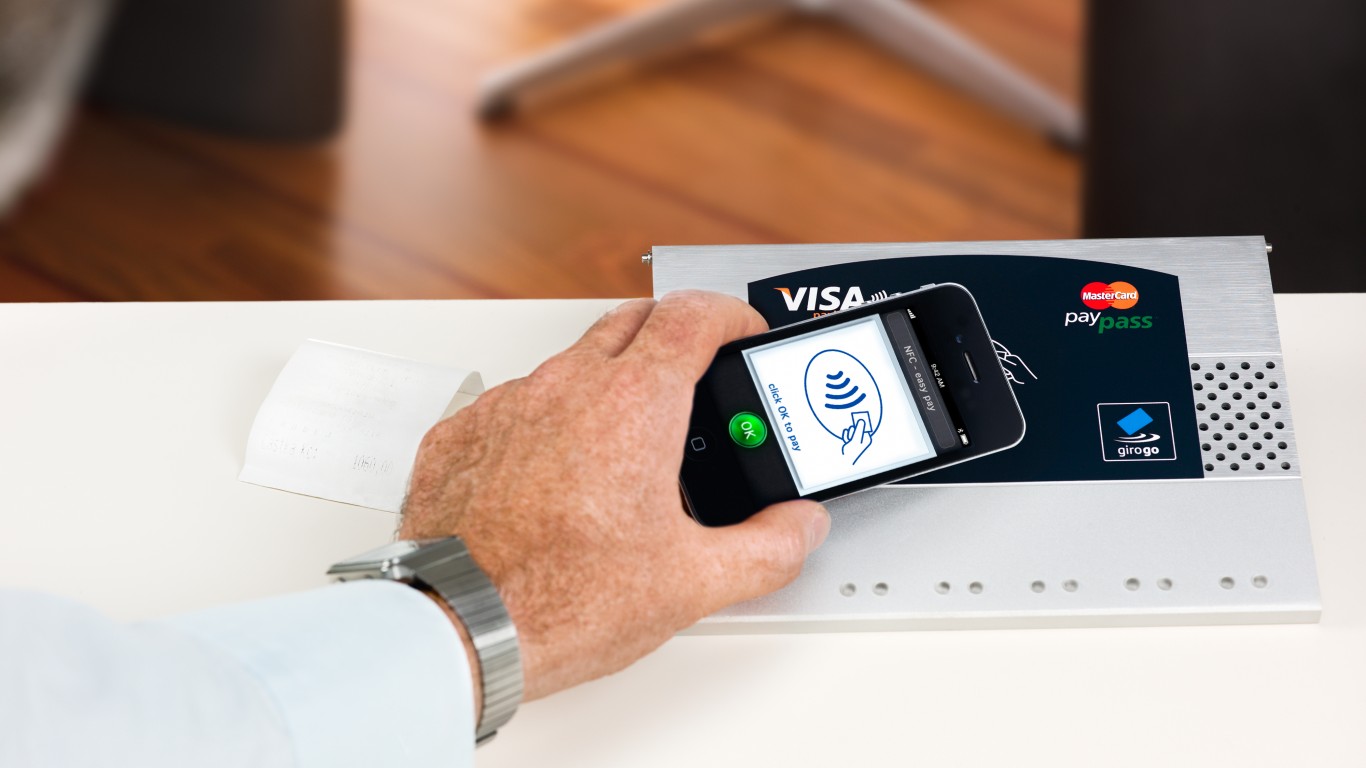Technology
What's Up With Apple: Crypto Comes to Apple Pay, Watch Nabs 33% Market Share, and More

Published:

Cryptocurrency exchange Coinbase on Tuesday announced that people would now be able to use their Coinbase Card with Apple Inc.’s (NASDAQ: AAPL) Apple Pay and Alphabet’s Google Pay to pay for purchases. Not only can the card be used to pay for purchases, but users also earn a 1% reward paid in bitcoin or 4% back in Stellar Lumens.
Apple Pay users can add the Coinbase card to their Wallets, just as they would with any other payment card. When someone pays for a purchase with the card, Coinbase converts the cryptocurrency to U.S. dollars and transfers the funds (minus a conversion fee) to the card.
In March, PayPal launched its Checkout with Crypto program that lets customers pay for purchases directly from their PayPal wallets. PayPal said it does not charge a transaction fee, charging instead a “cryptocurrency conversion spread” when people convert crypto to dollars.
That’s the catch with crypto payments, whether from Coinbase, PayPal or some other intermediary: payments are actually made in dollars (or other fiat currency) and there’s a cost involved in converting cryptocurrency into dollars. That cost is borne by the user.
A new report from Counterpoint research reveals that Apple Watch shipments rose by 35% year over year in the first quarter of 2021. Its share of the global smartwatch market increased by 3% to 33.5%. Samsung (Tizen OS) and Huawei settled for a second-place tie, each with 8% of the market.
Overall, global shipments rose by 35% year over year in the first quarter. Counterpoint’s senior analyst, Sujeong Lim, said, “Apple was able to further solidify its leadership position in the market by widening the portfolio from Watch SE to Series 6 at the right time. This may drive Samsung to launch a mid-price-tier model to boost growth.”
In terms of smartwatch OS platforms, Google’s Wear OS claims just 4.2% of the market, but Counterpoint believes that total will improve now that Google and Samsung have agreed to integrate Samsung’s Tizen OS with Wear OS and make a bigger push into the 3.5 billion-strong Android user base. Alphabet’s recently completed merger with FitBit adds another 3.7% of OS users to the company’s smartwatch base.
We noted yesterday the weekend release of Apple’s supplier reports. According to the South China Morning Post, nearly a third of the 52 companies (15) new to the 2020 list are based in China. In all Apple listed 200 companies on its supplier list.
Finally, Tom’s Guide reported Tuesday that Google is working on a way to allow users of Android-based phones to opt out of being tracked in much the same way that Apple implemented tracking transparency in its 14.5 iOS upgrade. Google has outlined a cookie replacement program it calls Federated Learning of Cohorts (FLoC). Here’s what Tom’s Guide has to say about FLoC:
The big problem with FLoC is that it might make perfect sense to those brainboxes over at Google’s campus, but for regular people, reading about FLoC and how it works on Google’s site is an absolute nightmare of complicated wording and soothing PR fluff.
Thank you for reading! Have some feedback for us?
Contact the 24/7 Wall St. editorial team.